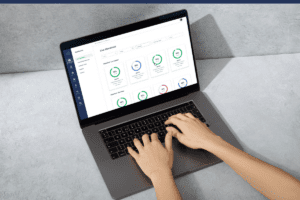Earlier this year, the COVID-19 pandemic permanently altered the education landscape by forcing schools to move their in-person programs online. While there is realistic hope that we will get the pandemic under control in the new year, there are many education lessons from 2020 that will apply to the new year regardless of the state of the pandemic. Below are seven lessons that institutions can utilize to set themselves up for success in 2021.
1. Blended learning is here to stay
In 2021, many institutions will choose to offer blended learning courses to provide safe learning environments while reaching a wider range of students. With fewer students on campus at a time, blended learning allows for realistic social distancing in classrooms and common areas. It also enables students who can’t commute to campus every day to learn effectively while remote. With tools and resources to facilitate online course components, schools can offer blended learning programs in addition to their typical fully on-ground courses.
2. Institutions must record hours accrued remotely and in-person
For clock-hour schools administering blended or hybrid learning programs in 2021, accreditors mandate that schools differentiate between students hours accrued online and on-ground. CourseKey’s tools make it easy for schools to distinguish between online and on-ground hours and present the data for admins to reference at a glance.
3. Touch free attendance limit the spread of germs
Attendance methods that force students to touch shared surfaces, like biometric scanners, or wait in line in close proximity to each other to sign a sign-in sheet facilitate the spread of germs. By implementing a mobile attendance solution, however, students can check in to class simultaneously without sharing germs. What’s more, schools can collect attendance data in real-time, significantly increasing efficiency and drastically improving their retention strategies.
4. Covid-19 questionnaires protect staff and students on ground
The most effective way to stop the spread of COVID-19 is by keeping staff and students who have exhibited symptoms or have been in contact with anyone who has, from coming to campus. Using a daily health check questionnaire, students can report their symptoms within seconds and be approved (or declined approval) to come to campus. Schools have utilized CourseKey’s health check questionnaire to protect the safety of staff and students while collecting digital records that can be easily exported and shared with regulators.
5. In online courses, communication is key
As many institutions and their students experienced when they were forced to rapidly switch to distance learning, relying on email and video conferencing solutions don’t foster truly effective communication. With those methods, schools had far fewer opportunities to communicate with students online compared to in-person to understand their state of mind or offer helpful resources during the transition. Students had far fewer touch points with their institution than they were accustomed to since their daily in-person opportunities to interact with peers and instructors were eliminated overnight. To jumpstart opportunities for effective communication, schools can implement tools to allow peer-to-peer interaction, one on one communication between students and their instructors, and course-wide communication.
6. Instructor burnout is real
Instructors were forced to learn to teach their courses online and went to great lengths to assist students and help them persist. The consistent effort they exerted to facilitate distance learning while worrying about the safety of students and colleagues led to more work-related stress than ever before. These 10 ways to support instructors are helpful to keep in mind as we head into 2021.
7. Technology adoption is necessary to stay relevant
The pandemic forced many institutions to adopt technology to deliver course material online, streamline operations, keep staff and students safe, and tackle other new challenges throughout the year. The tech they adopted this year helped digitize many of the operations that were previously done using manual labor and elevated many institutions to become more innovative and modernized. The added efficiency and insight into learning data provide value that will remain essential to operations moving forward.
A strong start to 2021 with education lessons from 2020
Institutions can apply the lessons learned in 2020 to start the new year off on the right foot. By creating effective learning environments online and on-ground, keeping staff and students safe as we continue to navigate the pandemic, and realizing how technology adoption can transform operations, institutions will set themselves up for a successful 2021.
Recent Articles

















